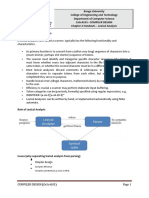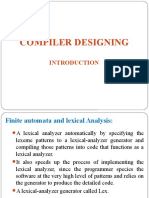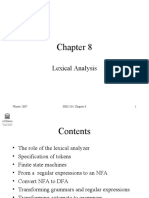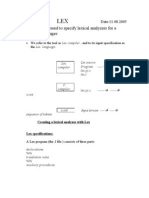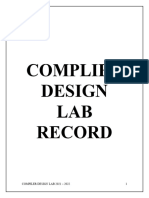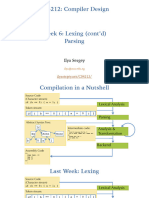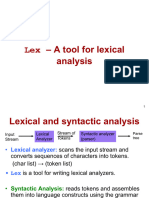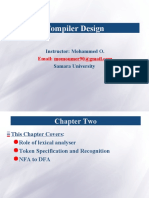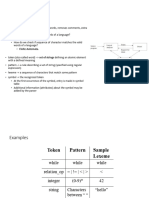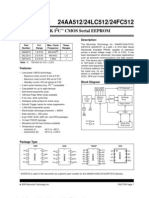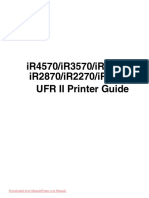0% found this document useful (0 votes)
51 views4 pagesAssignment 3 - Solution - Compiler Design
The document is an assignment for a Compiler Design course, consisting of 10 multiple-choice questions related to lexical analysis and tools like Lex and its variants. Each question includes an answer and a detailed solution explaining concepts such as DFA, NFA, and Lex specifications. The assignment aims to assess understanding of the compilation process and related terminologies.
Uploaded by
muraribhardwaj9199234848Copyright
© © All Rights Reserved
We take content rights seriously. If you suspect this is your content, claim it here.
Available Formats
Download as PDF, TXT or read online on Scribd
0% found this document useful (0 votes)
51 views4 pagesAssignment 3 - Solution - Compiler Design
The document is an assignment for a Compiler Design course, consisting of 10 multiple-choice questions related to lexical analysis and tools like Lex and its variants. Each question includes an answer and a detailed solution explaining concepts such as DFA, NFA, and Lex specifications. The assignment aims to assess understanding of the compilation process and related terminologies.
Uploaded by
muraribhardwaj9199234848Copyright
© © All Rights Reserved
We take content rights seriously. If you suspect this is your content, claim it here.
Available Formats
Download as PDF, TXT or read online on Scribd
/ 4




